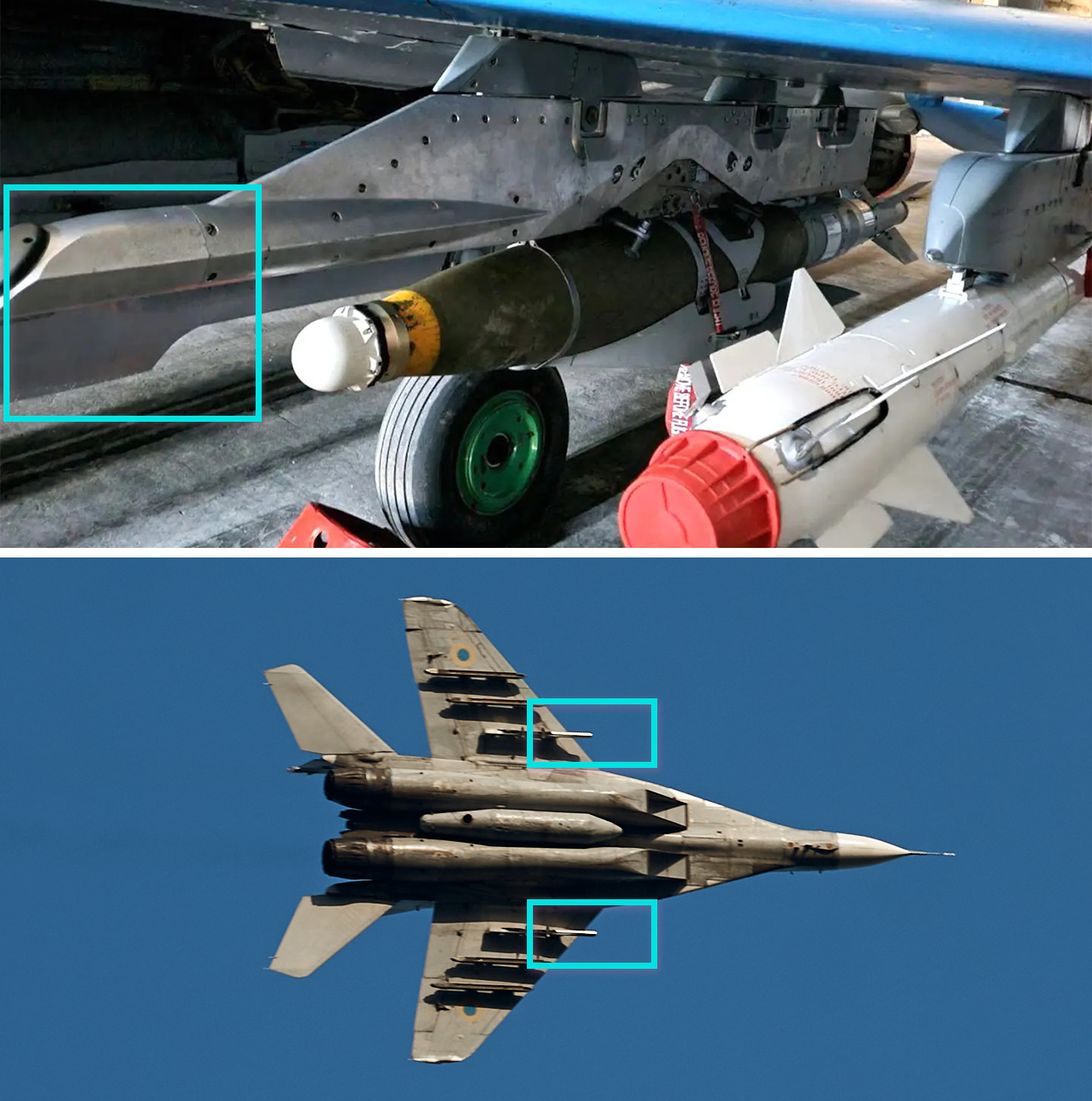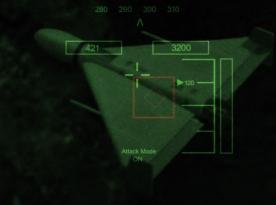A lot has been said about the inventive and sometimes sophisticated ways the Ukrainian Air Force integrates new unconventional weapons into the arsenal of its Soviet-era aircraft, and JDAM-ER guided bombs are no exception: we have already seen a photo of a MiG-29 carrying them attached to unusual pylons under the wing hardpoints, published by the Ukraine's Air Force Command.
However, the new photo shared on social media and thoroughly analyzed by The Drive tells us that MiG-29 had to go an exceptionally long way before it became compatible with JDAM-ER. The most notable is the nose part of the launch mechanism that protrudes forward from the wing and a black, seemingly plastic patch on the very nose.
Read more: Adjusting JDAM-ER to Fit Onto Ukrainian Su-27 Turned Out More Difficult Than Expected

The key point is, every detail in military equipment design has a purpose, especially in aviation. All indications say this pylon is more than just a holding mechanism.
The Drive speculates that this protrusion in front creates a radio-transparent window for a satellite communication antenna, so it has "a clear line of sight to the satellite constellation."
If that is correct, this means the pylon should also be accommodating a device that clarifies the exact location of the bomb before the launch. This is a much more reliable system than a standard algorithm when the pilot had to navigate the aircraft to an exact predetermined launch spot in 3D (including precise altitude) because there was no data exchange between the Soviet-era fighter jet and the American smart bomb.
There is still a question remaining whether this sophisticated pylon can adjust the coordinates of a target mid-flight, or it is yet limited to navigation data only. Nevertheless, even this much available functionality has a huge impact as it enables the pilots to be more flexible with the launch spot, given that the bomb gets relevant location data just before the launch. JDAM-ER, in turn, can utilize this information to adjust its flight trajectory.
Currently, this is the leading hypothesis with respect to the purpose of the protrusion on the bomb launcher. The alternative explanations suggest it has an electronic interference emitter or a detector of radar illumination. Though those versions are less likely because these distinct pylons were only seen used with JDAM-ER bombs, while some other integrated weapons, such as AGM-88 HARM anti-radar missiles, would benefit much more from these utilities yet got integrated without them.

To sum things up, the evidence and analysis reveal that adaptation of Ukrainian MiG-29 fighters for carrying JDAM-ER turned out more complex than some other Western weapons. It took developing basically a new rail launcher with new capabilities. These inventive solutions may pave the way for some even more advanced, fully operational combinations of Western and Soviet-type weapons. For example, there's already the whole FrankenSAM project aiming to create hybrid air defense systems.
Also, earlier Defense Express covered how JDAM-ER was integrated into Su-27 attack aircraft, and it was no less difficult and interesting, thanks to a device identified by us as the MAU-50 rail launcher.
Read more: Defenders of Ukraine Shot Down russian Su-34 Fighter-bomber in Mariupol Direction














